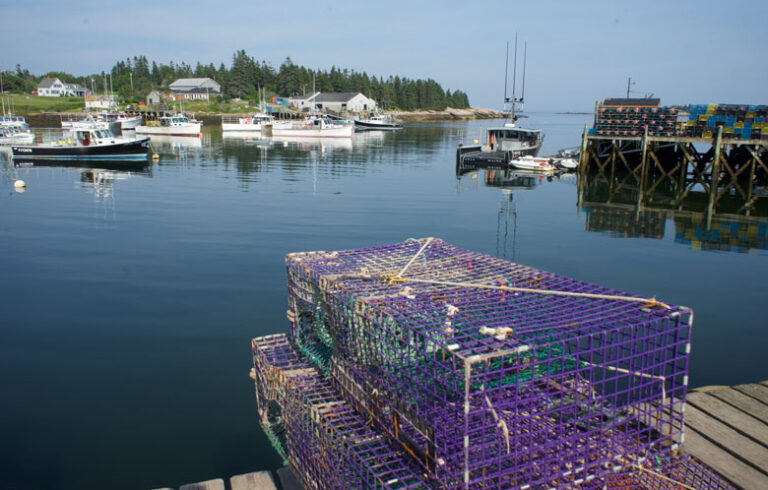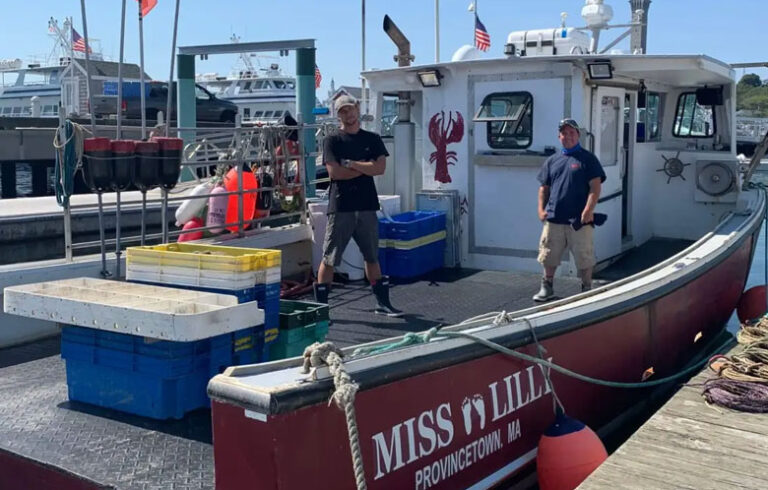Editor’s Note: This is the first in a series of stories about how immigration is changing the face of the Maine coast. The writer, Jennifer Atkinson, is a lawyer in Friendship who specializes in immigration matters.
If asked to name the most ethnically diverse towns in Maine few people would list Milbridge, a community in Washington County where 6 percent of the population and 24 percent of the elementary school students are Hispanic or Latino. Most would talk about the issues facing Portland or Lewiston.
One reason why diversity is so important is that it is directly linked to Maine’s two major demographic challenges. First, Maine is one of only two U.S. states experiencing a population decline. To reverse this trend, some have suggested that Mainers just start having more children. But this brings up the other problem. Maine is old. Our childbearing population is too small. We can’t birth our way to growth even if every young person who was born here stayed here.
We need more reproducing people to come to Vacationland and stay. This is where diversity comes in. Ninety-three percent of U.S. population growth is in non-white communities. White America, whose median age is in the low 40s, is almost as old as Maine. Our median age is about 44. The U.S. population is holding its own, however, because it is just 64 percent white. Maine’s population, on the other hand, is 96 percent white. We are losing population precisely because we are so white. To grow, Maine has to become more racially diverse.
Milbridge, a small town of about 1,300 residents situated on the mouth of the Narraguagus River and famous for its blueberries is, therefore, a place worthy of every coastal community’s attention. From 2000 to 2010 its population increased over 7 percent. The town is starting to bend the curve. But how?
Naturally, there’s no cookie cutter approach to such a complex challenge, but Milbridge may offer some insights. To start, the town had a connection through its labor market. Maine’s blueberry crop has been harvested by a largely Hispanic, Passamaquoddy and Mi’kmaq migrant work force since the 1970s. Nowadays, many of the region’s Hispanic residents have a strong connection to this seasonal workforce.
CUCUMBER OPPORTUNITY
The humble sea cucumber, however, created the key opportunity. In the late 1990s Cherry Point Products in Milbridge needed more workers to process sea cucumbers for Asian markets.
“When the cucumber plant started there were two Mexican families here,” explains Edith Flores, client services coordinator for Mano en Mano and the Washington County caseworker for the Maine Migrant Health Project. “The families were asked by the plant’s owners if they knew of anyone who wanted to do this kind of work because they weren’t getting anyone to apply,” she said.
As the two families spread the word about the work opportunities at Cherry Point, more Hispanic workers began settling Downeast.
Sea cucumber processing added that extra season of work that people needed in order to stay put and support themselves year round. During Cherry Point’s more prosperous years from 2000 to 2008, more and more Hispanic workers and their families headed to Washington County.
Most were already either permanent U.S. residents (green card holders) or citizens, relocating from the southeastern U.S. Some, however, came directly from Mexico, usually through the sponsorship of their family members who had U.S. citizenship or permanent residency status.
These new Mainers weren’t like foreign workers in other Maine industries (such as logging, hospitality or wreath making) where many laborers hold temporary “non-immigrant” work visas. Most of the Hispanic families who moved Downeast could live and work anywhere in the U.S., whereas non-immigrant visa holders can only stay in the U.S. temporarily and for certain purposes like work, study or cultural exchange.
As the sea cucumber plant’s operations slowed down towards the decade’s end, many of those who had come to love the area looked for ways to put down stronger roots and raise their families here. Some started buying property and looking for year-round employment at places like the Wyman blueberry plant or in lobster processing.
According to Flores, “They like it here because it is small. They can be better connected to school and teachers. Most have another family in the area and that makes it even better for them.”
Today, the Latino community in Milbridge and surrounding towns is 350 people strong. Most (around 80 percent) are from the central Mexican city of Morelia in the state of Michoacán. Others originate from different parts of Central America and the Caribbean. Quite a few are parents who, like Flores, moved to Washington County as kids.
“This new generation with little ones, they want to stick around. They like it here,” she said. “They grew up here.”
Many of these first generation Mainers have left the cycle of seasonal employment that brought their families north. As bi-lingual graduates of area high schools and colleges, they are able to stay in the region by working in health care, education, food service or social services.
ENTREPRENEURS
Other community members have started new businesses. Best known among these is the Mexican take-out run by the Vazquez family. Open seasonally on Main Street, this eatery serves what many say is the best burrito in Maine. Flores expects to see even more new, Hispanic-owned, businesses emerging in the next few years.
Despite Washington County’s reputation for employment challenges, getting a job has actually been less of a problem Downeast for new Mainers than housing.
According to MaineHousing, the average cost of a home in Milbridge in 2013 was about $97,000, which the agency considers affordable for those with an income close to $29,000 per year. The average monthly rental cost in the Machias area for a two-bedroom home (with utilities) was $826, affordable for only those making just over $33,000 per year.
Mano en Mano estimates that salaries for Hispanic residents range from $15,000 to $30,000 a year, below the town’s median income of about $33,400 per year.
When it was operating, the Cherry Point processing plant solved the housing problem for some through its practice of leasing trailers on company owned land. In 2010, Mano en Mano was finally able to break ground on its “Hand in Hand” apartment complex with six affordable rental housing units offered to permanent U.S. residents or citizens working in agriculture or aquaculture and meeting certain income guidelines.
Last year, another option opened up when the Cherry Point plant closed for good. The owners created a mini-affordable housing boom by selling their rental trailers (minus the land they stood on).
“Housing more than jobs is slowing growth of the Hispanic community here,” Flores explained. “Rent is quite high and there’s not much to rent. Families that are already here sometimes invite another family because they have space in their home. After a couple of years they might be able to buy their own piece of land and get their own home.”
COMMUNITY LIFE
There is, of course, more to life than jobs and housing, and these aspects affect the desirability of communities to newcomers of any ethnicity. Flores and her colleague, Ian Yaffee, executive director of Mano en Mano, freely admit that the response from the region has had its high and low points.
In the 1990s, when young Latino families began settling in the area, those concerned about the impacts of a dwindling population reached out to help them feel welcome.
“All these newcomers, from in the ’90s and early 2000s, were clearly having an economic impact on the area,” Yaffee said, “to schools, businesses, the number of young people, housing, taxes and more. They still are.”
The newcomers, however, have not moved in trouble free.
During the better years at the Cherry Point plant, Flores remembers the resentment that surfaced over Hispanics “from away” taking Maine jobs. “It was pretty strong back then. But these companies are looking to fill jobs that Mainers won’t take.”
Yaffee also says this kind of intolerance was present when Spanish-speaking students began receiving special “English Language Learner” (ELL) help in school.
These tensions made state and national news seven years ago when Mano en Mano proposed an affordable housing project. Although the project was designed to help any low-income family working in agriculture or aquaculture, those opposed to the project saw it as a boon for minorities who would take their jobs, burden their schools, and contribute to the local drug problem. During that two-year battle, the town placed a moratorium on affordable housing, which sent Mano en Mano to federal court.
Today, Hand In Hand apartments is fully occupied, often with a diverse mix of white, Hispanic, Latino and multiracial families. And in place of property taxes, Mano en Mano makes an annual payment to the town.
And over at Milbridge Elementary School, some of the work that has been going on for ELL students is getting national attention for its innovations and efficacy. The school, coping with over a decade of declining enrollment, reports 33 percent of its kindergarten class (which, at 24 kids is currently the largest class in the school) is Hispanic, and 24 percent of this same class are Spanish-speaking students who receive ELL services.
Businesses also have experienced new growth.
“I remember when I first came here,” says Flores, “and there were maybe four jalapeno peppers and six tomatoes in the local grocery store and I needed a whole pound of them for one recipe. Now there is Mexican canned and boxed foods. The store is huge now.
“During the blueberry harvest, there are long lines and the parking lot is full every day and into the evening,” she said. “A lot of that is from the Latino community.”
Overall, Milbridge has been welcoming, Yaffee said, despite opposition by some to immigrant communities.
“But the bottom line is that immigrants can have an overwhelmingly positive economic impact anywhere, when they are welcomed with open arms and given the opportunity to succeed.”
Sometimes, simple changes can be the most meaningful to newcomers. The school now sends its letters and notices home in Spanish and English. And for the last three years, its annual holiday concert has included a Spanish carol.
“The first time they did it, I was afraid of how the community would react but it turned out very welcoming,” Flores remembers. “It wasn’t just our kids singing. The whole class sang in Spanish.”
Flores also reports that Latino parents have started talking to the local library about offering its regular story hour in Spanish as well as English.
Looking ahead, neither Yaffee nor Flores predict any new spikes in the Hispanic population Downeast. Instead, they foresee the community growing slowly as it becomes more deeply rooted in small town Maine life.
As opportunities for work, housing, and education grow, community members now see one of their top issues as religious worship. Much of the community is Catholic but none of the nearest churches (Cherryfield, Machias and Ellsworth) include Spanish in their services and neither of the two priests who serve the nine churches in the area speak Spanish.
“This is a big, big need,” says Flores. “The community is starting to think about how to address this next.”





